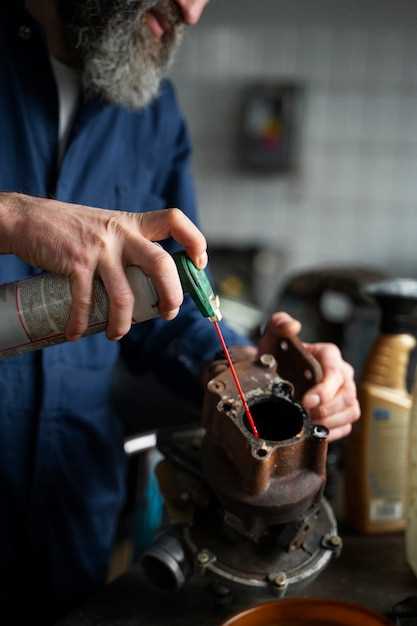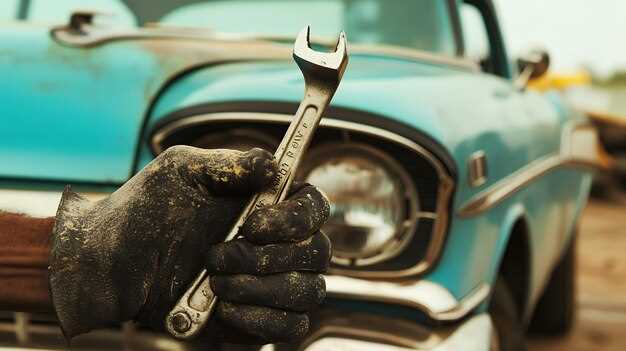
Owning a vintage car is not just about the aesthetic appeal; it’s also about the care that goes into maintaining its performance and longevity. Regular maintenance is vital to ensuring that these remarkable vehicles remain in excellent condition, preserving their history and charm for generations to come. Understanding and implementing routine maintenance practices can help you enjoy your classic car to the fullest, all while protecting your investment.
The uniqueness of vintage cars often requires specialized knowledge and techniques that differ from modern vehicles. Routine care encompasses a variety of aspects, from engine checks to bodywork assessments. Developing a structured maintenance schedule tailored to your classic car’s specific needs can dramatically enhance its reliability. In this article, we will delve into essential maintenance tips and techniques that every classic car owner should consider.
Whether you are a seasoned classic car enthusiast or a newcomer to the vintage car world, these practical insights will empower you to give your beloved vehicle the attention it deserves. By investing time in routine upkeep, you not only ensure optimal performance but also and safeguard the timeless beauty of your classic car.
Checking and Replacing Classic Car Fluids
Maintaining the fluids in your vintage car is crucial for its longevity and performance. Regularly checking and replacing fluids is an essential part of car care that helps prevent engine wear and ensures smooth operation.
Start with the engine oil, which lubricates the engine’s moving parts. It’s important to check the oil level and condition frequently. Dark or gritty oil indicates it needs changing. Replace it according to the manufacturer’s recommendations, typically every 3,000 to 5,000 miles, or annually if your driving habits are less frequent.
The coolant system must also be monitored. The coolant prevents overheating and protects the engine from corrosion. Check the coolant level regularly and top it off when necessary. It’s advisable to replace the coolant every two years to avoid any buildup of deposits that could impair the system’s efficiency.
Transmission fluid is another critical substance that needs attention. Inspect the level and quality, ensuring the fluid is bright red and free from burnt odors. If the fluid appears dark or smells burnt, it should be changed to maintain smooth gear shifts and overall transmission health.
Brake fluid is essential for safe stopping. Regularly check the fluid level and ensure there are no leaks. Brake fluid should be replaced every two years to prevent moisture absorption, which can lead to brake failure.
Lastly, don’t neglect the power steering fluid and differential fluid. Both should be checked for proper levels and replaced as necessary. Keeping these fluids at the right levels ensures your vintage car remains easy to handle and operates optimally.
By routinely checking and replacing these crucial fluids, you can enjoy your classic car’s performance and preserve its value for years to come.
Maintaining Tires and Brakes for Vintage Vehicles

Maintaining tires and brakes on vintage vehicles requires a specific approach to ensure the safety and longevity of these classic cars. Tires are vital for traction and handling, while brakes are crucial for stopping power. Regular inspection and care can help preserve these components and enhance the driving experience.
First, check tire pressure regularly. Vintage vehicles may require different pressure levels than modern cars, so refer to the owner’s manual for the correct specifications. Under-inflated tires can lead to increased wear and tear, while over-inflation can affect handling. Additionally, inspect the tread depth; tires with insufficient tread can compromise grip and safety.
Pay attention to tire age as well. Even if the tread looks good, rubber can degrade over time. Many experts recommend replacing tires every six to ten years, regardless of mileage. Consider using tires specifically designed for vintage vehicles, as they often provide better performance and authenticity.
For brake maintenance, start by inspecting the brake pads, discs, and systems for wear. Vintage cars may have differing specifications for braking components, so understanding these differences is essential. Replace worn brake pads promptly to avoid damaging the rotors. It’s also vital to check brake fluid levels and replace the fluid as recommended, typically every two years, to maintain the system’s efficiency.
Regularly inspect and clean the brake lines and connections to prevent leaks and ensure proper operation. During the inspection, listen for any unusual sounds while driving, as they can indicate problems with the brakes that require immediate attention. If there’s confusion about brake components, consulting a professional is advisable for accurate diagnostics and service.
Finally, maintaining proper alignment and balancing of tires contributes to even wear and enhances brake performance. Misalignment can lead to uneven tire wear and affect braking distance. This care is particularly crucial for vintage vehicles, where historical integrity and performance are paramount.
Preserving the Exterior and Interior of Classic Cars

Classic cars hold a special place in the hearts of enthusiasts and collectors alike, and proper maintenance is essential to preserve their beauty and value. Approaching both the exterior and interior with care ensures these vintage vehicles remain in pristine condition for years to come.
Exterior Maintenance
To maintain the exterior of a classic car, begin with regular washing using a gentle car shampoo specifically designed for vintage finishes. This will remove dirt and grime without stripping protective wax. After washing, it’s important to dry the car thoroughly to avoid water spots and potential rust formation.
Applying a high-quality wax every few months helps protect the paint from UV rays and environmental contaminants. For deeper scratches or blemishes, consider using a mild polishing compound to restore the finish. Keeping the car covered or parked in a shaded area will also minimize sun damage.
Rust Prevention
Rust is one of the biggest threats to classic cars. Inspect the bodywork regularly for any signs of rusting or corrosion. If found, treat it immediately with a rust converter or seek professional help to repair any significant damage. Additionally, consider using a rust-proofing spray, particularly in areas prone to moisture exposure.
Interior Care
The interior of a classic car also requires meticulous attention. Start by vacuuming regularly to remove dirt and debris that can wear down materials over time. Use soft brushes and lint-free cloths to clean delicate surfaces without causing scratches.
For leather seats, utilize a dedicated leather cleaner and conditioner to maintain suppleness and prevent cracking. Fabric upholstery should be treated with a fabric protector to repel stains and spills. Avoid exposing the interior to direct sunlight for prolonged periods, as this can lead to fading and deterioration.
Dashboard and Trims
Regularly dust and polish the dashboard and trim using appropriate cleaners that won’t damage original materials. For wooden elements, consider applying a wood conditioner to keep finishes looking fresh and vibrant. Always store the car in a climate-controlled environment to reduce the likelihood of temperature-related damage.
Following these maintenance tips will help preserve both the exterior and interior of your classic car, ensuring its longevity and timeless appeal. Remember, a little effort goes a long way in maintaining the charm of these vintage treasures.


